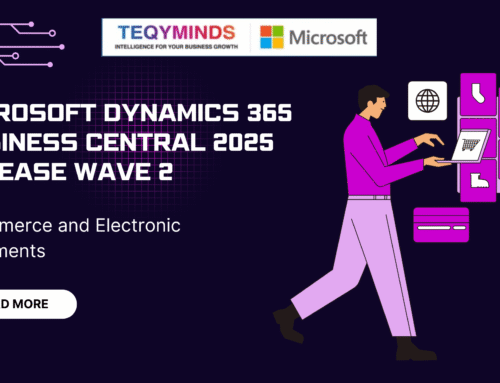In the rapidly evolving business landscape, companies need tools that can adapt, scale, and simplify operations. Microsoft Dynamics 365 Business Central (BC) has emerged as a frontrunner in the ERP (Enterprise Resource Planning) space, especially as we head into 2025. Whether you’re a small business looking to grow or an established enterprise aiming to modernize, Business Central offers a comprehensive, future-ready solution.
1. Microsoft Dynamics 365 Business Central
Business Central is an all-in-one ERP solution by Microsoft designed for small and medium-sized businesses (SMBs). It streamlines processes, enhances collaboration, and provides real-time insights into operations, enabling businesses to make smarter decisions. Built on the robust Microsoft Azure cloud platform, Business Central integrates seamlessly with other Microsoft tools like M365, Power BI, and Teams.
The ERP caters to a wide range of business needs, including:
- Financial management
- Supply chain operations
- Purchase & Inventory Management
- Sales and Marketing
- Service Management
- Manufacturing Management
- Project Management
2. Scalability for Growing Businesses
As businesses grow, their needs evolve. Systems that work for a company today might not meet the demands of tomorrow. Business Central is designed with scalability at its core. Whether you’re expanding to new markets, increasing your workforce, or launching new product lines, the system adapts to your growth without requiring a complete overhaul.
Key scalability features include:
- Modular add-ons: Start with what you need and add functionalities as required.
- Flexible user licenses: Scale up or down depending on the number of users.
- Cloud-based architecture: Access resources on-demand without worrying about infrastructure limitations.
3. Integration with Microsoft Ecosystem
One of Business Central’s standout features is its seamless integration with the Microsoft ecosystem. If your team already uses tools like Excel, Outlook, or Teams, integrating Business Central into your workflow is effortless. This ensures that employees can work within a familiar environment, reducing the learning curve.
Some examples of integration include:
- Excel: Export, analyze, and manipulate data directly in Excel and sync it back to Business Central.
- Power BI: Generate interactive dashboards and reports for deeper insights into your operations.
- Teams: Collaborate and share data from Business Central within Teams conversations.
4. Cloud-Based Convenience
Gone are the days of bulky on-premises systems requiring costly maintenance. Business Central is cloud-first, offering businesses the flexibility to work from anywhere while reducing IT costs. The cloud-based approach means:
- Automatic updates: Stay on top of the latest features and security enhancements without manual intervention.
- Anywhere access: Work remotely with full access to your ERP via mobile devices or web browsers.
- Reduced downtime: Microsoft’s reliable Azure platform ensures high availability and disaster recovery.
5. Advanced Analytics and Insights
Data is the lifeblood of modern businesses, and Business Central excels in turning data into actionable insights. With built-in analytics and seamless integration with Power BI, the system empowers decision-makers to identify trends, forecast outcomes, and optimize operations.
Key analytics features include:
- Real-time dashboards for monitoring KPIs.
- Customizable reports tailored to your business needs.
- Predictive analytics for anticipating future trends and challenges.
6. Industry-Specific Solutions
Every industry has unique needs, and Business Central caters to this diversity through industry-specific modules and customizations. Whether you’re in manufacturing, retail, or professional services, the platform offers tailored solutions that address your challenges.
Examples of industry applications include:
- Manufacturing: Manage production schedules, track raw materials, and optimize supply chains.
- Professional Services: Track project costs, manage resources, and ensure timely deliveries.
7. Cost-Effective ERP Solution
Unlike traditional ERP systems, which often involve hefty upfront costs and long implementation times, Business Central is budget-friendly. Its subscription-based pricing model allows businesses to pay only for what they use.
- Cloud hosting reduces the need for expensive hardware.
- Modular design ensures you’re not paying for unnecessary features.
- Faster deployment minimizes downtime and associated costs.
For SMBs, this makes Business Central an accessible yet powerful tool.
Conclusion: A Future-Ready ERP Solution
Microsoft Dynamics 365 Business Central is more than just an ERP—it’s a comprehensive business solution designed for growth, adaptability, and innovation. As we approach 2025, businesses need tools that can keep pace with technological advancements and changing market demands.
With its cloud-first approach, seamless Microsoft integration, advanced analytics, and scalability, Business Central stands out as the ERP solution of choice. Whether you’re a small business or an enterprise, investing in Business Central ensures you’re equipped to thrive in the years to come.






Leave A Comment